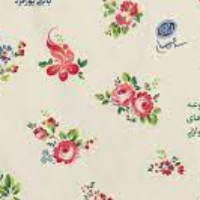Reconstruction, Damage Analysis, and Structural Analysis of the GrivarInscription in the Twelve Imams Mausoleum of Yazd
The construction date of the ‘Twelve ImamsMausoleum’ in Yazd goes back to the end of the Buyidsand Daylamites periods. The architectural ornaments of this building include murals, plasterworks, faience mosaics, and brickworks; also, an inscription with decorative Kufic script has decorated its parts. The research conducted on this building is limited to the architecture and restoration of its external walls, while the dome has valuable ornaments, including the inscription of ‘Ayatul Kursi’ in its Grivar. This inscriptionis implemented using the technique of ‘painting on plaster’. This historical monument has been seriously damaged due to the age of the building and the destructive environmental effects on it. These damages are either erosion destroying the appearance of the building or the structural destruction destroying the foundation of the building; therefore, knowing the damage so as to prevent further destruction and reconstruction is of particular importance to preserving this thousand-year-old monument.
This research tries to study the damages inflicted on this inscription with the help of reconstruction and damage photography. It, also, tries to to know the structure and motifs used in it in comparison with similar inscriptions. The questions raised in this research were: 1- What were the damages caused to the Grivar inscription in the Twelve Imams Mausoleum? 2- What was the general structure and decorations used for this ornament? This research was descriptive-analytical, and data collection was based on library studies and field surveys. Its approach in the image processing section of the inscription to determine the amount of damage was quantitative, and in the structural analysis it was qualitative. The primary research sources were provided using field photography; the damage mapping of the sides of the inscription was reconstructed based on photographs and images; image processing was provided using a computer program and a color analysis method. The images processed based on color; the numerical results were separated and analyzed based on tables, and the possibility of reproducing the inscription provided the conditions for its structural investigation concerning the analysis of external components and visual features.
The mentioned inscription is in Kufic (Moashaq Moshajar) script, written in dark azure color on a plaster base. This inscription began with "Bismillah" from the third side of the top of the entrance door and ended with the phrase ‘Al-Ali al-Azeem’ at the end of the eighth side. Over time, damages were imposed on this inscription, leading to the destruction of many parts. Among these damages were humidity, mud,and water flow from the upper parts on the surface of the inscription, the effect of suspended particles in the air, pollution, and dust, the change in the writing's color, the loosening of the paint layer, and its separation from the plaster bed due to the passage of time, penetration termites and the porosity caused by their activity in the lower layers, the cracks caused by earthquakes or other shocks and the forces entering the building, and the traces of droppings of birds or other creatures on the surface of the inscription. Measuring the accurate amount of damage on each side was done in the form of three separate images for each side: 1- The reproduced image of each side of the inscription was in black and white without destruction (the processing of this image provides the amount of positive (text) and negative (background) space to determine the amount of damage in other destructions). 2- The recreated image of each side showed infrastructure destruction in red and paint loss in blue 3- A black-and-white image of each side of the inscription was used to estimate surface pollution. Based on this damage imaging method, by comparing the white and black colors on each side and the percentage of white and black in the ‘initial recreated design’, it was noted whether the destruction damaged the writing itself or the background of the inscription. Accordingly, the fifth side had the most serious destruction of the background with 8%, and the the most serious destruction of the text with 7%. The results of the processing of the blue color, which represents the ‘paint loss’ showed that the first side had the highest amount of paint loss (7% loss), which caused the color of the design and the background to be the same. The lowest amount of paintloss was assigned to the second and the third sides. According to the results, ‘surface pollution,’ had a 100% extent in the inscription.
Based on the reconstruction of the destructed parts, damage imaging, and image processing with computer programs, the damages have been divided into three general categories: 1) destruction of infrastructure materials, 2) paint loss, 3) surface pollution. The results indicate that the most serious damage was caused mainly by the fall of infrastructure materials, paint loss, and environmental pollution. Structural analysis showed that this inscription had all three structural components of inscriptions including the plant system in the upper part, the geometric system in the middle part, and the writing system in the lower part. The greatest similarity was in the plantmotif, and the greatest diversity was seen in the knots of the geometric part. Although these systems were not necessarily used in all architectural inscriptions, this inscription had all three parts in a structured way showing that the designer had designed each component in harmony to achieve a coherent whole.
-
Hidden calligraphy and geometry in the the inscriptions of Sheikh Safi al-Din Ardabili collectionCase study: Dome Allah Allah
Niloufar Seifi *,
Journal of Negarineh Islamic Art, -
The application of five selected principles of Gestalt in the analysis of the grave inscription of the tomb of twelve imams in Yazd
*, Farnoosh Shamili
Journal of Negarineh Islamic Art, -
Analysis of Visual Features of the Murals of Seyyed Rukn al-Din Mausoleum’s Dome based on Iconology Approach
, Farnoush Shamili *, Yaser Hamzavi
Negareh journal, -
The effect of various types of public art in urban spaces on the perceived vitality of women in Ardabil
MohammadHasan Yazdani *, Abolfazl Abdolahi Fard, Shiva Velayati, Samira Saeidi Zarangi
Motaleate Shahri, -
A Comparative Analysis of Visual Elements of the Stucco Ornaments in Soltaniyeh Monument, Sayyed Roknaddin Mausoleum and Sayyed Shamsaddin Mausoleum in Yazd
Farnoush Shamili *, Zeinab Samadnezhadazar, Yaser Hamzavi
Negareh journal,





